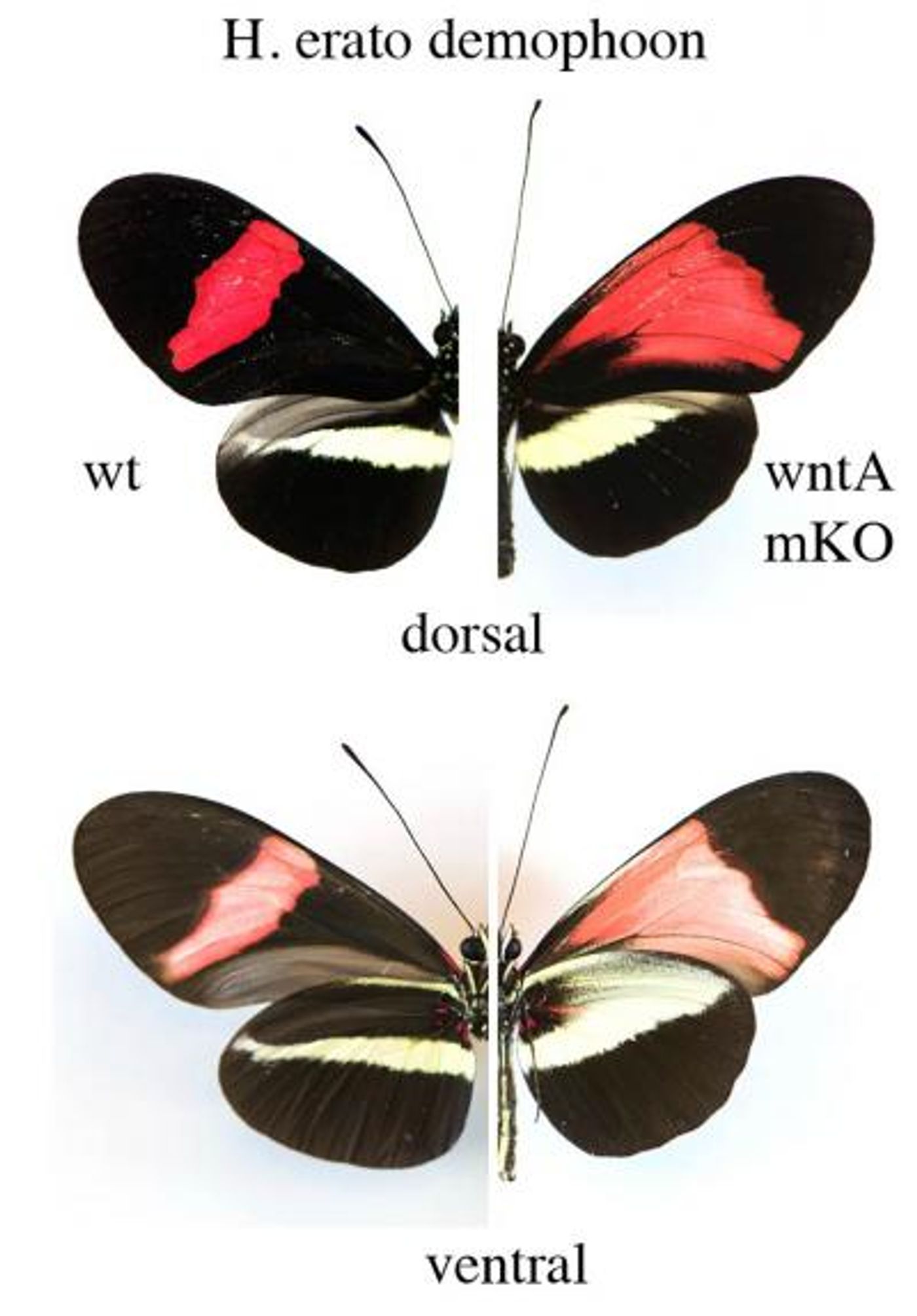Researchers Find the Genetic Key to Butterfly Wings
By studying the genetics behind butterfly wing patterns, researchers have managed to learn how to control it. Reporting in the Proceedings of the National Academy of Sciences, investigators at the Smithsonian Tropical Research Institute in Panama discovered that a single gene could create the myriad types of butterfly wings that can be observed in nature. This work may help scientists understand how regulatory genes exert an effect on many genes, and how to increase the efficiency and efficacy of genetic manipulation.
"Butterfly wing patterns are amazing:" said report co-author Owen McMillan, staff scientist at STRI, "a true evolutionary novelty, highly diverse and strongly shaped by natural and sexual selection. By genetically engineering individuals from different species, we are quickly coming to grips with how this diversity is generated. Surprisingly, a single gene and one that is used repeatedly throughout development can have huge effects."
The team knocked out the expression of the WntA gene, finding that it is in control of wing patterning. The gene encodes for a signaling molecule that maintains similarity among different species, exerting an influence on body development in insects. The molecule is a morphogen, or a diffusible signal that sets the position of special kinds of cells in tissues.
"Imagine a paint-by-number image of a butterfly. The instructions for coloring the wing are written in the genetic code. By deleting some of the instructions, we can infer which part says 'paint the number two's red' or 'paint the number one's black," explained McMillan. “Of course, it is a lot more complicated than this because what is actually changing are networks of genes that have a cascading effect on pattern and color."
Carolina Concha, Biogenomics Post-doctoral Fellow at STRI, outlined their research. "Working in the Smithsonian's new lab in Gamboa, Panama, we injected butterfly eggs with an RNA probe that attached to part of the genetic code, a gene called WntA, which we suspected played a role in the expression of color.”
“After knocking out the gene, we let the butterflies grow up and compared the wing patterns of the knockout mutants with the original wing patterns," noted Richard Wallbank a STRI and Cambridge postdoctoral fellow.
This procedure was then performed in seven different butterfly species; a comparison of the results revealed surprising ways the WntA gene could influence wing patterns.
"Going back to the paint-by-number analogy, 'Number one' can move around the wing in different butterfly species, and even in different color pattern variants of the same species. In Monarchs, for example, the gene is expressed with fine precision along the wing veins. In contrast, in Heliconius, a group known for vivid wing patterns, the gene is expressed in bold brush strokes from essentially the tip to the base of the wing. And it gets even crazier because the color of 'Number one' can change depending on context, shifting between different colored pigments and even changing how light is reflected. In butterflies, color is a function of both pigment and the structural properties of the scales cells that cover the wing," McMillan explained.
Scientists can now predict how many genes one regulatory gene might control based on how many potential binding regions are in the gene. By having regulatory genes, an organism can be spared the work of making a protein for every single job.
"The butterflies and moths, the Lepidoptera, are the third largest group of organisms known on the planet," said Martin, now Assistant Professor of Biology at George Washington University and corresponding author of the study. "Once we identified the sets of genes regulated by a gene like WntA, we can look at the sequence of different butterflies in the family tree to see when and where these changes took place during the 60 million years of butterfly evolution."
Sources: AAAS/Eurekalert! Via Smithsonian Tropical Research Institute, PNAS









